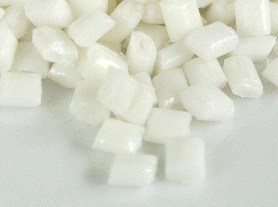PP resin polypropylene is a rigid and crystalline thermoplastic used widely in everyday objects like packaging trays, household products, battery cases, medical devices, etc. Explore this comprehensive guide and learn everything you need to know about this widely used thermoplastic.
| |
 What is Polypropylene and What It's Used for? What is Polypropylene and What It's Used for?
PP resin polypropylene is a tough, rigid, and crystalline thermoplastic produced from a propane (or propylene) monomer. It is a linear hydrocarbon resin. The chemical formula of polypropylene is (C3H6)n. PP is among the cheapest plastics available today.
PP resin polypropylene belongs to the polyolefin family of polymers and is one of the top three widely used polymers today. Polypropylene has applications both as a plastic and a fiber in:
Automotive Industry
Industrial Applications
Consumer Goods, and Furniture Market
It has the lowest density among commodity plastics. | |
| |
How to Produce Polypropylene?
These days, polypropylene is made from the polymerization of propene monomer (an unsaturated organic compound - chemical formula C3H6) by:
Ziegler-Natta polymerization or Metallocene catalysis polymerization
Upon polymerization, PP can form three basic chain structures depending on the position of the methyl groups:
Atactic (aPP) - Irregular methyl group (CH3) arrangement
Isotactic (iPP) – Methyl groups (CH3) arranged on one side of the carbon chain
Syndiotactic (SPP) - Alternating methyl group (CH3) arrangement
| |
 Types of Polypropylene & their Benefits Types of Polypropylene & their Benefits
Homopolymers and Copolymers are the two major types of polypropylene available in the market.
Polypropylene Homopolymer is the most widely utilized general-purpose grade. It contains only a propylene monomer in a semi-crystalline solid form. Main applications include packaging, textiles, healthcare, pipes, automotive and electrical applications.
The Polypropylene Copolymer family is further divided into random copolymers and block copolymers produced by polymerizing of propene and ethane:
Polypropylene Random Copolymer is produced by polymerizing together ethene and propene. It features Ethene units, usually up to 6% by mass, incorporated randomly in the polypropylene chains. These polymers are flexible and optically clear making them suitable for applications requiring transparency and for products requiring an excellent appearance. | |
While in Polypropylene Block Copolymer, ethene content is larger (between 5 and 15%). It has co-monomer units arranged in regular patterns (or blocks). The regular pattern hence makes thermoplastic tougher and less brittle than the random copolymer. These polymers are suitable for applications requiring high strength, such as industrial usages.
Get Inspired: Meet the urgent demands for greener polypropylene products (lighter, recyclable, high-performance PCR grades...) with beta nucleation to gain an edge over your competition.
Polypropylene, Impact Copolymer – Propylene Homopolymer containing a co-mixed Propylene Random Copolymer phase which has an ethylene content of 45-65% is referred to as PP impact copolymer. It is useful in parts that require good impact resistance. Impact copolymers are mainly used in packaging, houseware, film, and pipe applications, as well as in the automotive and electrical segments.
Expanded Polypropylene - It is a closed-cell bead foam with ultra-low density. EPP is used to produce three-dimensional polymer foam products. EPP bead foam has a higher strength-to-weight ratio, excellent impact resistance, thermal insulation, and chemical and water resistance. EPP is used in various applications ranging from automobiles to packaging, from construction products to consumer goods, and more.
Polypropylene Terpolymer - It is composed of propylene segments joined by monomers ethylene and butane (co-monomer) which appear randomly throughout the polymer chain. PP terpolymer has better transparency than PP homo. Also, the incorporation of co-monomers reduces crystalline uniformity in the polymer making it suitable for sealing film applications.
PP resin polypropylene, High Melt Strength (HMS PP)– It is a long-chain branched material, which combines both high melt strength and extensibility in the melt phase. PP HMS grades have a wide mechanical property range, high heat stability, good chemical resistance. HMS PP is widely used to produce soft, low-density foams for food packaging applications as well as used in the automotive and construction industries.









 What is Polypropylene and What It's Used for?
What is Polypropylene and What It's Used for? Types of Polypropylene & their Benefits
Types of Polypropylene & their Benefits

